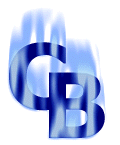One of the most expensive and important output device is the computer monitor. They allow us to interact visually with the computer. It is like a television except in that a computer monitor makes much better more detailed images. If you have ever seen a computer hooked up to a regular TV you will see that the picture is horrible, it will be very blurry and bad for the eyes. The way a monitor works 1. Signals from the operating system or application are received by the video card. In the video card signals are sent to a digital to analog converter (DAC) which is one chip that contains actually three DACs one for red, green, and blue. 2. The DAC takes digital values to a table that has matching voltage levels (each color has a different voltage assigned to it, a table has a total of 262,144 possible colors, 256 of which can be stored in a VGA adapter's memory at a time. Super VGA handles more colors, higher resolutions and more pixels.) 3. The adapter sends signals to 3 electron guns in the back of the monitor to the cathode ray tube (CRT), each electron gun shoots electrons, one gun for each of the three primary colors. 4. The adapter sends signals to a magnetic deflector yoke, which uses electromagnetic fields to bend electron stream paths, that focuses and aims electron beams. The signals sent to the yoke determine the resolution (numbers of pixels horizontal and vertical, the more pixels the better the screen looks and the higher the resolution) and monitor refresh rate (how often the screen is redrawn). 5. The beams pass through a metal plate called the shadow mask, which helps keep electron beams aligned with the targets on the inside of the CRT screen. A term called the dot pitch identifies the measurement of the distance of the holes from each other, the smaller the number the closer the holes and the better the screen looks. The holes are arranged in triangles. 6. The electrons strike phosphors coating, which is a material that glows when struck by the the electron beam, the inside of the screen. The stronger the beam is shot the brighter the phosphors are. The different colors are made by varying the intensity of the beams. The phosphors also glow for a short time after being charged, this is called persistence. 7. The beams make a horizontal sweep from left to right in a row right below the previous line. The magnetic deflection yoke changes the angles that the beams are making to sweep across the screen from the upper left to the lower right corner, this is called a field. After completion of one field a screen is redrawn or refreshed at least 60 times a second. |





